Coromandel, Oysters, Coves & Beaches
After the heat of the geothermals we set off to cool down with a sea breeze as we headed north toward the Coromandel Peninsula, via the Bay of Plenty. After being inland among the forests and mountains it was good to be heading to the sea again. Both John and I feel more comfortable when we can smell the sea and we weren’t disappointed travelling the shoreline over a good couple of days.
We had been planning that evening to stay over at Turanga or, as we now know, the beautiful and popular Mount Maunganui. This is described as New Zealands answer to the Australian Gold Coast on arrival we knew why. The bodies and the beaches are golden and pristine and the place was busy for the long weekend holiday. We carried on and made our way to quiet site in Te Puna but not before finding ourselves in Bethlehem.
No we hadn’t entered a special worm hole that had whisked us back to Palastine, but found a place called Bethlehem on the outskirts of Tauranga. We did feel as though we were back in the real place given the amount of god fearing roadside posters and churches. We quickly headed off to Te Puna for the evening and what we thought was a nice quiet campsite to enjoy the warming sun.
It was not the sound of noisy revelling Kiwis or cavorting children that was ruining the peace but a group of Cicada making a terrible din. We’ve heard these since arriving on our New Zealand travels, but the heat of the day and the muggy weather was making them go crazy. The sounds they make have been measured at up to 120 decibels which is equivalent to a loud rock concert and getting close to the output of a pneumatic drill. Thankfully they quietened down as the day cooled and we got some sleep.
The Coromandel Peninsula
From here we made it into the Coromandel Peninsula via quite a few gold and silver mining towns. Well they might have been during the gold rush, and many offer you little tours of now disused mines and rides on trains and tracks used during the rush. We were not tempted by the glistening of gold and continued up through Coromandel Forest park to Thames. John had already managed to source his own gold from a stream at the Glaciers so no need to forage for more.
Nor were we tempted by a detour to see the the giant L&P bottle at Paeroa. We have tried the drink and it is pleasant, it has a lemon and ‘secret’ formula flavour with, we thought, a hint of ginger.
From here, if like us you decide to do a clockwise tour of the peninsula, you get to spend an hour on a beautiful winding coast road which looks out onto the Firth of Thames. It was now the Monday afternoon of the holiday and so we spent a few corners dodging the returning holiday traffic, especially as most of them seemed to be hauling huge boats on trailers behind them.
Halfway up the peninsula we spotted hundreds of small black objects in the middle of the Forth of Thames and wondered what they were. A stop in a picnic area and the lengthening of the zoom on the camera revealed that they were buoys marking the baskets and nets of the local and visiting fishermen. They were thousands of them both buoys and men (see what I did there!) We carried on, mystery solved, this is fishing and seafood country.
As John had missed his chance at Bluff Oysters in the South Island he started to salivate at the thought of getting them here. As we came off the coast road and started winding our way up the hills we spotted a sign for an oyster shop a few kilometres ahead. It was clear what we were having for lunch that day and a fine one it was too. A dozen delightful oysters washed down with a serving of delicious mussel chowder and we were some very full and happy travellers ready to have a quick mooch around Coromandel. We made our way east again and finished the day at Whitianga which is on Mercury Bay.
Whitianga is a beautiful town nestled in Mercury Bay and an excellent base to catch the tide based attractions the next morning.
Hot Pools and Cathedrals
We had a tide to catch at Hot Water Beach (more of why later) so we spent the morning walking to the The Cathedral Caves on Near Cooks Beach in Hahei. They are accessed by an hour and half of, at times, very steep tracks which nearly finished us off.
But the weather was perfect and with a few stops and three litres of water we made the journey there and back and enjoyed the stunning beach and Caves. We also did a little side walk off the main track to visit gemstone beach and after 60 steep descending steps (which of course we had to climb again minutes later!) we arrived on a beach which would have been more appropriately named Cobblestone beach, not a gem in sight.
The caves are weather worn by the sea and as the local guide books and the DOC warning signs for some of the caves tell you they will eventually collapse, but they held firm while we were there.
Hot Water Beach was next, this is more accurately named than the Gemstone Beach. A couple hours each side of high tide, if you dig in the right spot in the sand you will be rewarded with hot mineral thermal water rising up into it from the Geothermal pools below the beach. It takes a while to find a hot spot but when you do you will be surrounded by others digging for a nice warm pool as well as a few dive bombing gulls who seem a little pissed off their quiet beach has been invaded with humans bearing shovels. Its all a bit of a laugh and another chance to get chatty with the locals.
Leaving Coromandel to Northland
We decided to make our final destination Northland that evening as time was slipping and as we’d been in NZ during Waitangi Day we decided we wanted to see this historic place before we had to give Bertha back. We made it through Auckland in rush hour (a severe test of Bertha and John as we waded through through constant streams of congestion).
On the journey we had a lunch stop on the other side of the Firth of Thames and debated whether to stay on a beautiful freedom camping area perched right on the Marine Shorebird Centre there. For the twitchers among you there are a vast array of marine birds that both live here permanently and also use this place during their annual migrations. It was very tempting as you are on a beautiful white sandy beach in absolute peace apart from the occasional bird squalk. But we left the silence behind and headed through Auckland to find a campsite for the night that would satisfy our now precise requirements.
We also had the pleasure of a cow on the side of a field of sunflowers which I made John stop at so I could scare the poor thing by taking a picture. It is one of my favourite shots of the journeys in New Zealand to date.

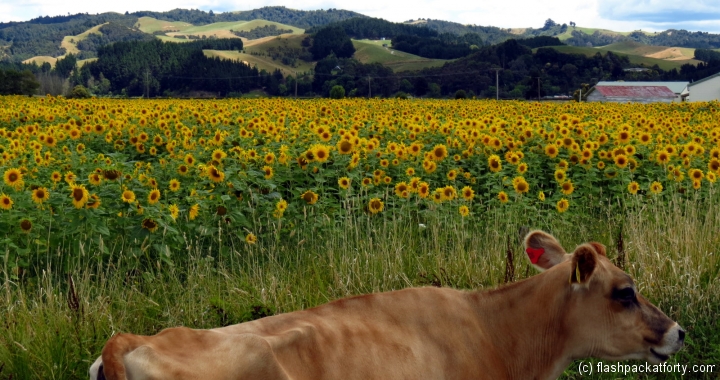


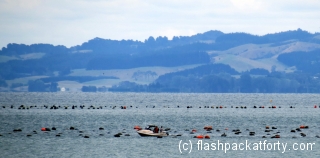
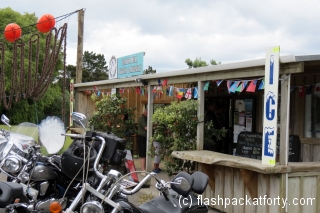


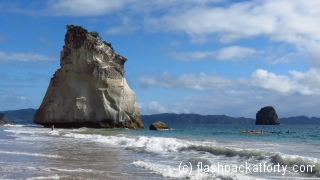
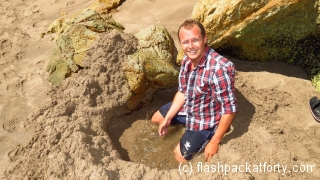

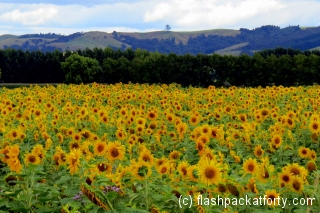
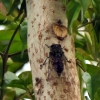
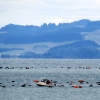
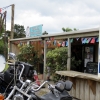
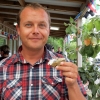
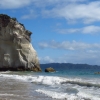
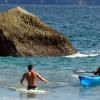
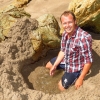
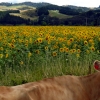
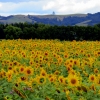
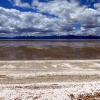
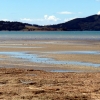
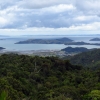
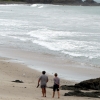
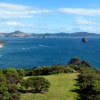
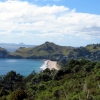
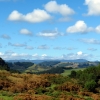
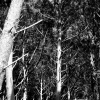

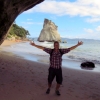
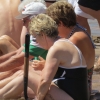
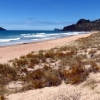

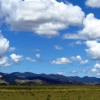
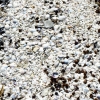







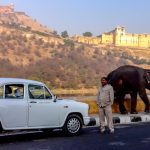
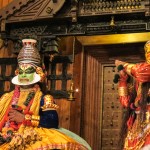

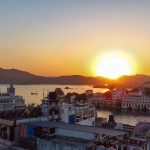
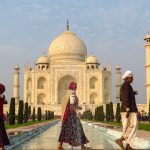
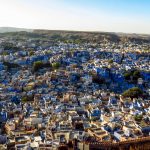
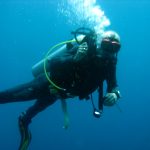

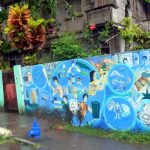
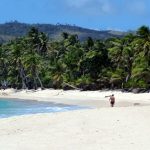
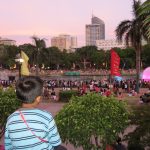
Poor cow, it looks quite happy in the pic, before you scared it!